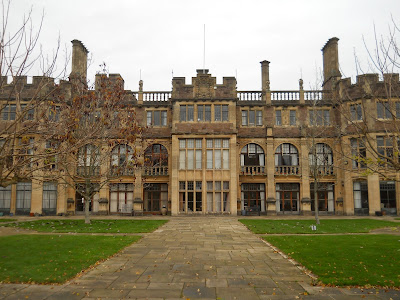It isn't necessarily a one-way process either; it's always interesting to experience things through the eyes of someone who is new to carving. Often 'learners' will come up with great ideas that I might not normally think of. Even after over twenty-one years of carving, new ways of imagining designs are always good to see.
In the last month, I've run two very different teaching sessions. The first was a session of individual tuition at my studio. One particularly enjoyable thing about individual tuition is that it means that the learner can practise with my own full set of professional carving tools, which wouldn't really be appropriate to use with larger groups of inexperienced carvers. I always use good quality, sharp tools when teaching anybody but with individuals, I can first make sure that they have the knowledge to safely use some of the particularly delicate tools in that set. The person attending can also have the entire session completely tailored around the particular information or skills that they want to learn more about.
I had worked with Rich before when he brought groups of disengaged young people to Boiling Wells, where I used to work part-time. He's been getting more and more interested in woodworking since then and wanted a few pointers about things that aren't necessarily taught in conventional carpentry or joinery courses, such as the uses of different kinds of native timbers.
Another subject that especially interested him was sharpening techniques. It strikes me that this is really best learned by actually being shown it, by some one who knows how to sharpen, and then practising it regularly. We covered everything from using different kinds of bench grinders to making an effective strop to hone blades until they are razor-sharp. By the end of the session, Rich not only knew how to sharpen using various types of sharpening device but also had his chisels and an axe honed again, to take back with him and use.
Later in November, I travelled over to Nailsea school to teach carving at the D.E.N. project. The school uses this area in its grounds to run forest school sessions and they are very interested in teaching students practical skills.
Throughout the afternoon, groups of up to five pupils came out to the small shelter in the D.E.N. area and carved oak plaques to take home with them.
They could carve pretty much whatever they liked and it was fascinating seeing what designs were produced. I was particularly interested by how many chose themes to do with computers, such as items from Minecraft, which they reproduced using the very traditional techniques of wood carving. It was also interesting seeing the journey that some people had during the session, from initially being very frustrated with new, unfamiliar skills to finding more confidence and eventually making pieces that were nicely done and that they could feel happy with.
Miss Hollingdale, who invited me to run the session, really got into the carving too and I anticipate that it's going to be a regular feature at D.E.N. sessions from now on!



















































